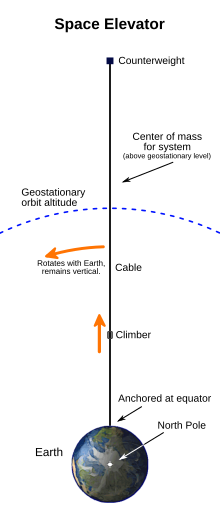
A space elevator, also referred to as a space bridge, star ladder, and orbital lift, is a proposed type of planet-to-space transportation system, often depicted in science fiction. The main component would be a cable anchored to the surface and extending into space. An Earth-based space elevator cannot be constructed with a tall tower supported from below due to the immense weight—instead, it would consist of a cable with one end attached to the surface near the equator and the other end attached to a counterweight in space beyond geostationary orbit. The competing forces of gravity, which is stronger at the lower end, and the upward centrifugal force, which is stronger at the upper end, would result in the cable being held up, under tension, and stationary over a single position on Earth. With the tether deployed, climbers (crawlers) could repeatedly climb up and down the tether by mechanical means, releasing their cargo to and from orbit. The design would permit vehicles to travel directly between a planetary surface, such as the Earth's, and orbit, without the use of large rockets.

A trebuchet is a type of catapult that uses a long arm to throw a projectile. It was a common powerful siege engine until the advent of gunpowder. The design of a trebuchet allows it to launch projectiles of greater weights and further distances than that of a traditional catapult.

The mangonel, also called the traction trebuchet, was a type of trebuchet used in Ancient China starting from the Warring States period, and later across Eurasia by the 6th century AD. Unlike the later counterweight trebuchet, the mangonel operated on manpower-pulling cords attached to a lever and sling to launch projectiles.

A forklift is a powered industrial truck used to lift and move materials over short distances. The forklift was developed in the early 20th century by various companies, including Clark, which made transmissions, and Yale & Towne Manufacturing, which made hoists. Since World War II, the use and development of the forklift truck have greatly expanded worldwide. Forklifts have become an indispensable piece of equipment in manufacturing and warehousing. In 2013, the top 20 manufacturers worldwide posted sales of $30.4 billion, with 944,405 machines sold.

A block and tackle or only tackle is a system of two or more pulleys with a rope or cable threaded between them, usually used to lift heavy loads.

A crane is a type of machine, generally equipped with a hoist rope, wire ropes or chains, and sheaves, that can be used both to lift and lower materials and to move them horizontally. It is mainly used for lifting heavy objects and transporting them to other places. The device uses one or more simple machines to create mechanical advantage and thus move loads beyond the normal capability of a human. Cranes are commonly employed in transportation for the loading and unloading of freight, in construction for the movement of materials, and in manufacturing for the assembling of heavy equipment.
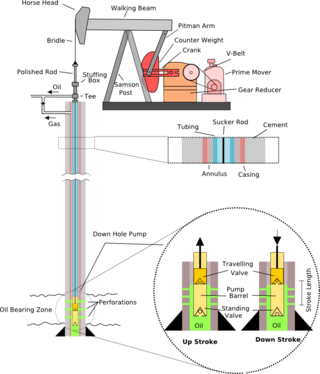
A pumpjack is the overground drive for a reciprocating piston pump in an oil well.

Suspension is the system of tires, tire air, springs, shock absorbers and linkages that connects a vehicle to its wheels and allows relative motion between the two. Suspension systems must support both road holding/handling and ride quality, which are at odds with each other. The tuning of suspensions involves finding the right compromise. It is important for the suspension to keep the road wheel in contact with the road surface as much as possible, because all the road or ground forces acting on the vehicle do so through the contact patches of the tires. The suspension also protects the vehicle itself and any cargo or luggage from damage and wear. The design of front and rear suspension of a car may be different.

A lunar space elevator or lunar spacelift is a proposed transportation system for moving a mechanical climbing vehicle up and down a ribbon-shaped tethered cable that is set between the surface of the Moon "at the bottom" and a docking port suspended tens of thousands of kilometers above in space at the top.
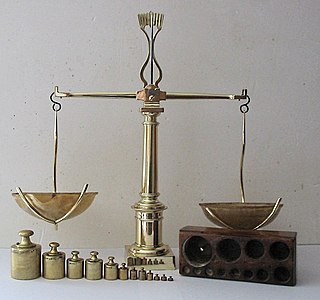
A scale or balance is a device used to measure weight or mass. These are also known as mass scales, weight scales, mass balances, and weight balances.

Kid Spark Education is a nonprofit organization that develops and produces affordable Mobile STEM Labs and curriculum for Schools and Youth Service Organizations. The Rokenbok Toy Company was founded in 1995 by Paul Eichen in the United States to create an heirloom quality toy system. The first Rokenbok toys debuted at the 1997 American International Toy Fair in New York City. In 2010 the company made a substantial push researching the effect of media, like Rokenbok, on developing minds. In 2015 the company transitioned into a 501(c)(3) and completed the development of their first 4 classroom specific products called Mobile STEM Labs. Since then, Kid Spark Education has placed Mobile STEM Labs in over 22 states across the country.

An orbital ring is a concept of an artificial ring placed around a body and set rotating at such a rate that the apparent centrifugal force is large enough to counteract the force of gravity. For the Earth, the required speed is on the order of 10 km/sec, compared to a typical low Earth orbit velocity of 8 km/sec. The structure is intended to be used as a space station or as a planetary vehicle for very high-speed transportation or space launch.

A fly system, or theatrical rigging system, is a system of ropes, pulleys, counterweights and related devices within a theater that enables a stage crew to fly (hoist) quickly, quietly and safely components such as curtains, lights, scenery, stage effects and, sometimes, people. Systems are typically designed to fly components between clear view of the audience and out of view, into the large space, the fly loft, above the stage.
Engine balance refers to how the inertial forces produced by moving parts in an internal combustion engine or steam engine are neutralised with counterweights and balance shafts, to prevent unpleasant and potentially damaging vibration. The strongest inertial forces occur at crankshaft speed and balance is mandatory, while forces at twice crankshaft speed can become significant in some cases.

A gantry crane is a crane built atop a gantry, which is a structure used to straddle an object or workspace. They can range from enormous "full" gantry cranes, capable of lifting some of the heaviest loads in the world, to small shop cranes, used for tasks such as lifting automobile engines out of vehicles. They are also called portal cranes, the "portal" being the empty space straddled by the gantry.

A steelyard balance, steelyard, or stilyard is a straight-beam balance with arms of unequal length. It incorporates a counterweight which slides along the longer arm to counterbalance the load and indicate its weight. A steelyard is also known as a Roman steelyard or Roman balance.
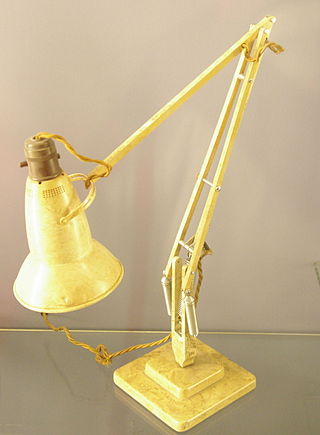
A balanced-arm lamp, sometimes called a floating arm lamp, is a lamp with an adjustable folding arm which is constructed such that the force due to gravity is always counteracted by springs, regardless of the position of the arms of the lamp. Many lamp brands, as well as other devices, use this principle.

An elevator (North American English) or lift (British English) is a machine that vertically transports people or freight between levels. They are typically powered by electric motors that drive traction cables and counterweight systems such as a hoist, although some pump hydraulic fluid to raise a cylindrical piston like a jack.
The floating arm trebuchet is a counterweight siege weapon which is a modern variation of the medieval trebuchet. Their defining feature is free movement of an axle on the throwing arm, and a linear drop channel for the counterweight. The design and construction of such machines is a popular project assignment in post-secondary engineering classes.
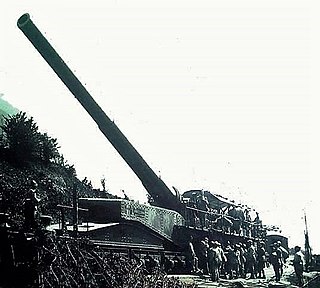
The Cannone da 381/40 AVS was an Italian railway gun that saw action during World War I.



